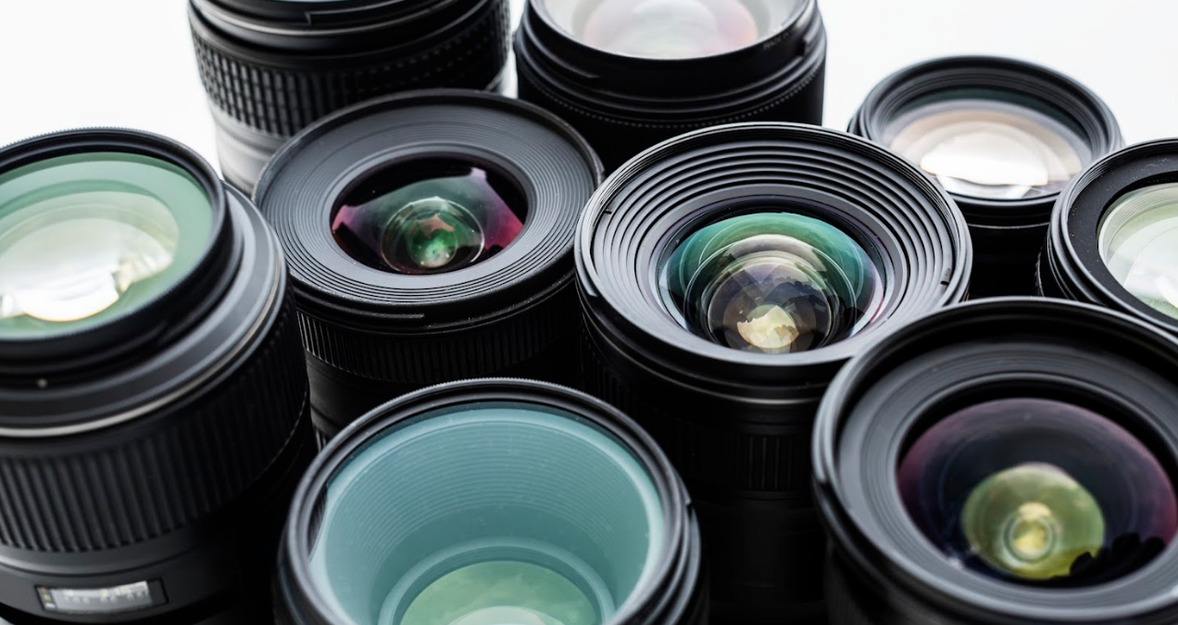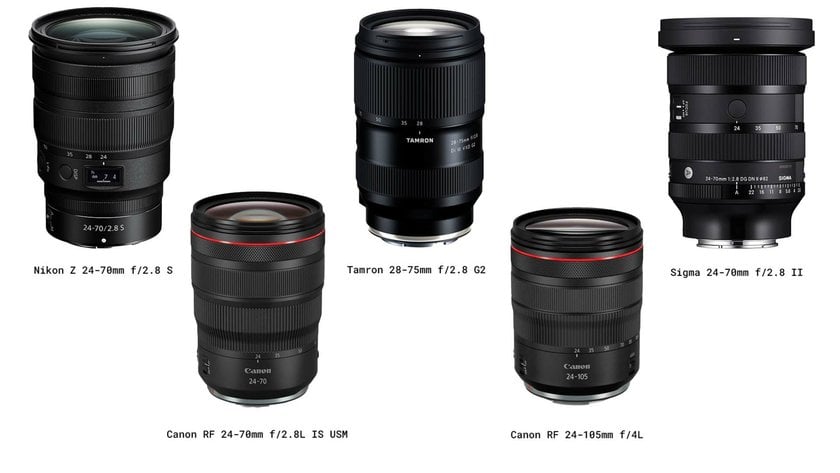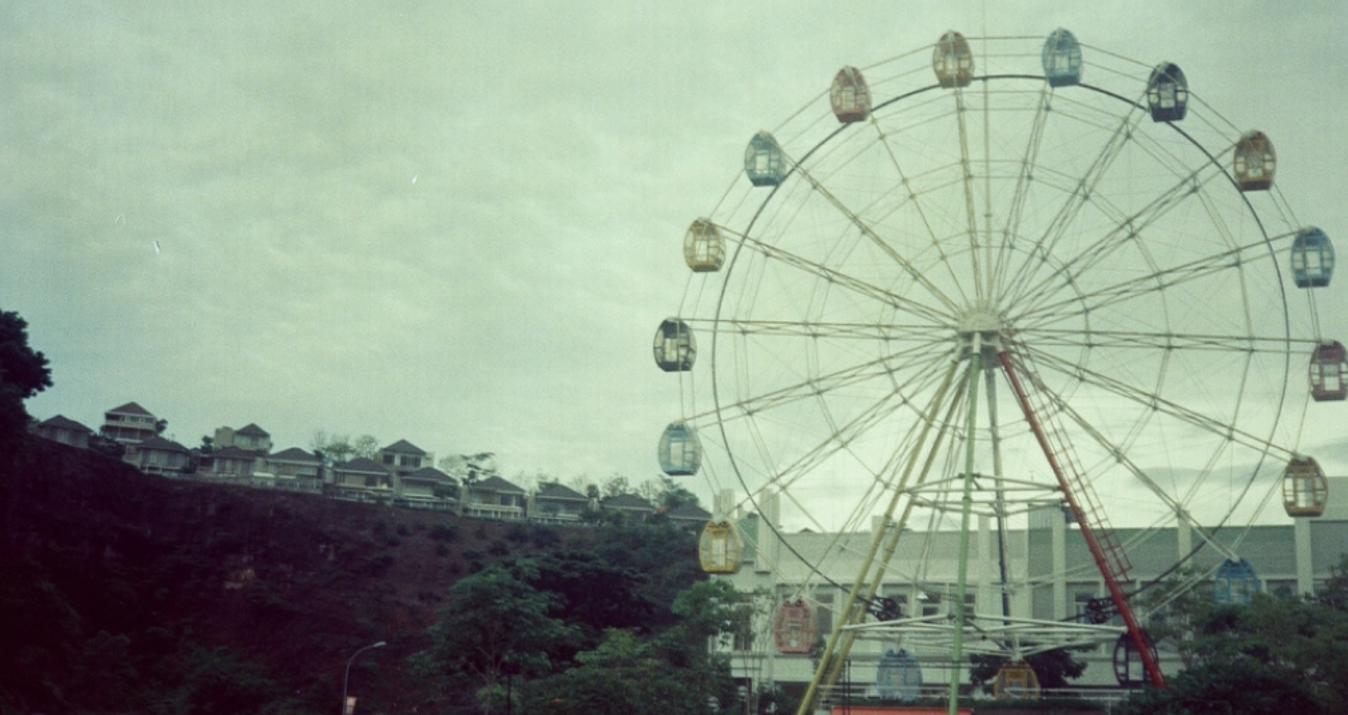Best Lens For Fashion Photography: Sharp, Stylish Results
April 15, 2025

Confused by lens options? Our guide highlights the best lenses for fashion portraits and what to consider before buying—ideal for beginners and pros alike.
Choosing the right lens for portrait photography can be mind-boggling, especially with so many brands, focal lengths and aperture speeds on offer. If you’re struggling to decide which one is best for you, rest assured you’re not alone. In this guide, we’ll cut through the confusion and highlight the lenses that truly excel for portrait work. We’ll also discuss the main factors to consider before you spend your hard-earned money, so you can make an informed decision. Here’s what you need to know.
Key Factors in Lens Selection
Lenses can often cost as much as, or even more than your camera body. However, don’t let the price tag discourage you: a high-quality lens can elevate your work and help you attract new clients, making it a worthwhile investment. Before you start browsing, here are a few important points to consider when choosing the right lens for portrait photography.
Focal Length
 Focal length is a key element of portraiture. Most portrait photographers opt for lenses of 50mm or above, as wider options like 24mm can distort perspective when shooting up close, leading to facial features appearing larger or less flattering. Wide lenses also capture more background detail, distracting attention from your subject. A 50mm lens tends to deliver a more natural, intimate look, with less background interference and more focus on the person you’re photographing.
Focal length is a key element of portraiture. Most portrait photographers opt for lenses of 50mm or above, as wider options like 24mm can distort perspective when shooting up close, leading to facial features appearing larger or less flattering. Wide lenses also capture more background detail, distracting attention from your subject. A 50mm lens tends to deliver a more natural, intimate look, with less background interference and more focus on the person you’re photographing.
Aperture
A wide aperture (where the lens is opened to its maximum) draws the viewer’s eye to the subject by creating a shallow depth of field. This produces that coveted soft, blurry background, often referred to as bokeh when lights in the distance take on a glowing effect. A shallow depth of field also improves your camera’s light intake, allowing you to use faster shutter speeds and lower ISO settings. This can be especially helpful for low-light portraiture, such as street or evening shoots.
Sharpness and Image Quality
Higher-end lenses typically feature superior glass and construction, which can translate to sharper images and fewer optical flaws like chromatic aberration or flaring. However, this level of quality usually comes with a higher cost. Some lenses provide exceptional clarity at the centre but soften toward the edges, so check for these details if edge-to-edge sharpness matters to you. Bear in mind that not everyone wants a clinically sharp look; some photographers favour lenses with unique “character,” even if they’re slightly softer, especially when it flatters skin tones. Research carefully to see which approach suits you best.
Versatility: Prime vs Zoom
 Prime lenses have a fixed focal length, while zoom lenses cover a range of focal lengths. Each type has its own strengths:
Prime lenses have a fixed focal length, while zoom lenses cover a range of focal lengths. Each type has its own strengths:
Prime Lenses (Pros): They tend to produce sharper images overall and often have wider apertures for better low-light performance.
Zoom Lenses (Pros): Their flexibility makes them great if you need to adapt quickly, such as when shooting street portraits in tight spaces.
If you work in a controlled studio environment, you may find a prime lens more suitable, since you’ll know exactly how far you’ll be from your subject. Street photographers, however, might prefer a zoom to avoid missing shots when space is limited.
Best Lens Choices for Portrait Photography
 Here are some recommendations to help you find the right lens for portrait work. Although lenses can be expensive, they are often a worthwhile investment, improving your image quality can lead to happier clients and more bookings.
Here are some recommendations to help you find the right lens for portrait work. Although lenses can be expensive, they are often a worthwhile investment, improving your image quality can lead to happier clients and more bookings.
Entry-Level Portrait Lenses

Prime Options
Canon RF 50mm f/1.8 STM
Sony FE 50mm f/1.8
Nikon Z 50mm f/1.8 S
Top Prime Pick: Nikon Z 50mm f/1.8 S
Renowned for its sharpness, pleasing colour rendition and smooth bokeh, this lens outperforms many rivals in its class. Though it is slightly pricier than the others, the results justify the extra cost.
Notes: These affordable 50mm lenses (often called “nifty fifties”) offer decent image quality. However, at this price level, you may notice occasional softness across the frame or slower autofocus in darker conditions.
Zoom Options

Sony FE 28-70mm f/3.5-5.6 OSS (Sony)
Sigma 17-50mm f/2.8 EX DC OS HSM (Canon/Nikon APS-C)
Top Zoom Pick: Sigma 17-50mm f/2.8 EX DC OS HSM
This lens balances sharpness with a lightweight build, making it convenient to carry around. It also delivers vibrant colours and respectable autofocus performance.
Notes: Zoom lenses can get heavy, which matters if you spend hours shooting. A bulkier lens can strain your wrists over time. With it being fairly light and having good low-light perfomance, the Sigma stands out as a practical entry-level choice.
Mid-Range Portrait Lenses

Prime Options
Sigma 85mm f/1.4 DG DN Art (Sony, L-Mount)
Nikon Z 85mm f/1.8 S
Canon EF 85mm f/1.8 USM
Top Prime Pick: Sigma 85mm f/1.4 DG DN Art
With a bright f/1.4 aperture, this lens remains surprisingly compact and lightweight. It is not weather-sealed, so shooting outdoors in poor weather may not be ideal, but you can still count on professional-quality results at a mid-range price point.
Notes: Lenses at this tier deliver strong image quality, though some lack premium build features such as weather sealing. Always confirm a lens’s shooting limitations if you plan to work in challenging conditions.
Zoom Options

Canon RF 24-70mm f/2.8L IS USM
Nikon Z 24-70mm f/2.8 S
Tamron 28-75mm f/2.8 G2
Canon RF 24-105mm f/4L
Sigma 24-70mm f/2.8 II
Top Zoom Pick: Sigma 24-70mm f/2.8 II
Widely praised for its excellent sharpness, rich colours and clarity, this lens made waves when it first appeared, thanks to its high-end performance at a more accessible price.
High-End Portrait Lenses

Prime Options
Canon RF 85mm f/1.2
Sony FE 135mm f/1.8 GM
Nikon Z 105mm f/1.4E
Top Prime Pick: Sony FE 135mm f/1.8 GM
Often considered the pinnacle of portrait lenses, it boasts exceptional sharpness, ultra-fast autofocus, and gorgeous bokeh.
Note: A 135mm focal length can feel limiting in tighter spaces or for street photography, but it excels at headshots and three-quarter views.
Zoom Options

Canon RF 70-200mm f/2.8L
Sony FE 70-200mm f/2.8 GM II
Nikon Z 70-200mm f/2.8 VR S
Top Zoom Pick: Canon RF 70-200mm f/2.8L
Praised for delivering razor-sharp results, it also manages to be lighter and more compact than similar alternatives, making it a standout in its class.
When choosing your lens, keep in mind where and how you usually shoot, as well as your budget. If you rely on indoor or studio sessions, a prime lens might suit you perfectly; if you often find yourself moving around in dynamic environments, a zoom lens could be more practical. By balancing focal length, aperture, build quality and cost, you can select a lens that both improves your photography and meets your specific needs.
How to Research Before Buying
 Now that you’ve narrowed down your lens options, it’s worth doing a bit more homework before making the purchase. Here are some ways to help you feel confident about your decision:
Now that you’ve narrowed down your lens options, it’s worth doing a bit more homework before making the purchase. Here are some ways to help you feel confident about your decision:
Read Reviews: Check online retailers to see what people are saying about the lens you’re interested in. This can give you a quick overview of its strengths and weaknesses.
Photography Forums: Browse dedicated forums or communities on sites like Reddit to find real-world feedback from other users. You can look through existing discussions or post your own questions for personalised advice.
YouTube Videos: Watch photographers testing the lens and sharing their thoughts, particularly if they’re shooting portraits. Seeing it in action can give you a better idea of whether it meets your needs.
Check Sample Photos: Have a look at high-quality images taken with the lens. Pay attention to sharpness and overall rendering, though bear in mind that factors like the photographer’s skill or set-up may influence the results.
Rent the Lens: If possible, consider renting the lens for a test run. This hands-on approach lets you see how comfortable it is to use and assess image quality in your usual shooting conditions. It’s a great way to confirm if it’s truly the right fit for you.
The Bottom Line
 Choosing which lens to buy can be daunting, especially with so many options available. Start by thinking about the core factors we covered such as focal length, aperture and budget to guide your decision. Once you have a lens in mind, do your homework by reading reviews, watching videos and, if possible, renting it to try out in your own shooting environment. Though lenses can sometimes cost as much as or even more than your camera body, they’re a valuable investment that can help you capture sharper images and, ultimately, land more clients. Invest in yourself and your future in photography, and enjoy your new lens!
Choosing which lens to buy can be daunting, especially with so many options available. Start by thinking about the core factors we covered such as focal length, aperture and budget to guide your decision. Once you have a lens in mind, do your homework by reading reviews, watching videos and, if possible, renting it to try out in your own shooting environment. Though lenses can sometimes cost as much as or even more than your camera body, they’re a valuable investment that can help you capture sharper images and, ultimately, land more clients. Invest in yourself and your future in photography, and enjoy your new lens!





